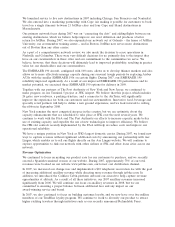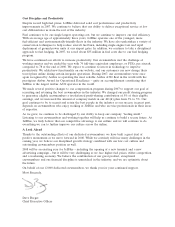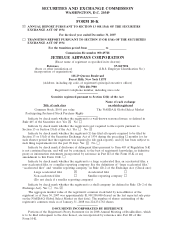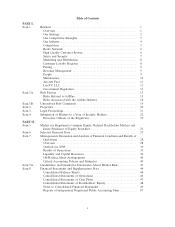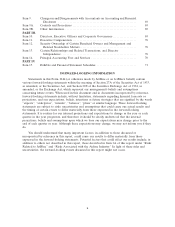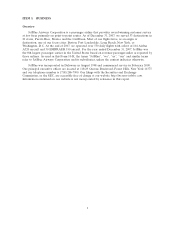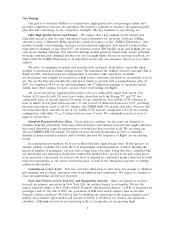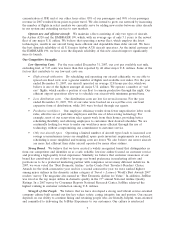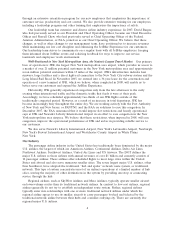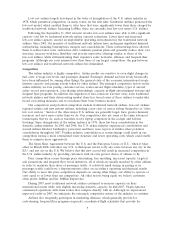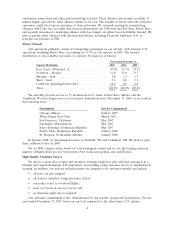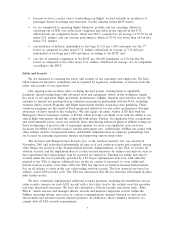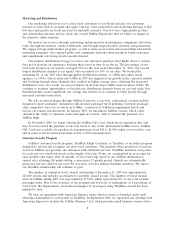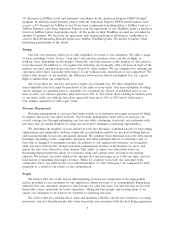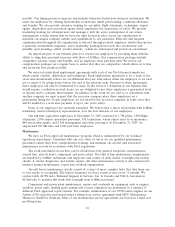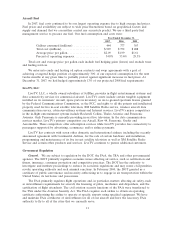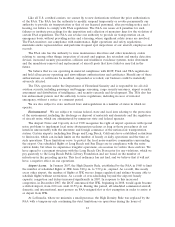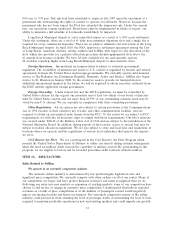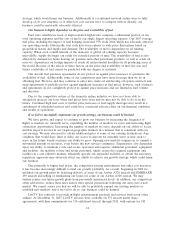JetBlue Airlines 2007 Annual Report Download - page 14
Download and view the complete annual report
Please find page 14 of the 2007 JetBlue Airlines annual report below. You can navigate through the pages in the report by either clicking on the pages listed below, or by using the keyword search tool below to find specific information within the annual report.through an extensive orientation program for our new employees that emphasizes the importance of
customer service, productivity and cost control. We also provide extensive training for our employees,
including a leadership program and other training that emphasizes the importance of safety.
Our leadership team has extensive and diverse airline industry experience. In 2007, David Barger,
who had previously served as our President and Chief Operating Officer, became our Chief Executive
Officer and Russell Chew, who had previously served as Chief Operating Officer of the Federal
Aviation Administration, or FAA, joined us as our Chief Operating Officer. We believe that these
changes, as well as other changes to our management team, have positioned us to increase revenues
while maintaining our low cost discipline and enhancing the JetBlue Experience for our customers.
Our leadership team strives to communicate on a regular basis with all JetBlue employees, keeping
them informed about JetBlue events and soliciting feedback for ways to improve our service,
teamwork and employees’ work environment.
Well-Positioned in New York Metropolitan Area, the Nation’s Largest Travel Market. Our primary
base of operations is JFK, the largest New York metropolitan area airport, which provides us access to
a market of over 21 million potential customers in the New York metropolitan area and approximately
seven million potential customers within 15 miles of the airport. JFK’s infrastructure includes four
runways, large facilities and a direct light-rail connection to the New York City subway system and the
Long Island Rail Road. In November 2005, we entered into a 30-year lease for the construction and
operation of a new terminal at JFK, which we believe, when completed in 2008, will enable us to
better serve our customers and expand the JetBlue Experience.
Historically, JFK generally experienced congestion only from the late afternoon to the early
evening when international traffic and the domestic traffic that feeds it were at their peak.
Accordingly, we have scheduled approximately two-thirds of our JFK flights outside of this
traditionally congested period. However, as a result of an increase in total departures, JFK has
become increasingly busy throughout the entire day. We are working actively with the Port Authority
of New York and New Jersey, or PANYNJ, and the FAA on solutions to ease this congestion. In
December 2007, the FAA announced that it would impose slot restrictions and hourly operational
caps at JFK and Newark’s Liberty International Airport in an effort to ease congestion in the New
York metropolitan area airspace. We believe that these restrictions, when imposed in 2008, will ease
congestion, improve the operational performance of JFK and aid us in providing reliable service to
our customers.
We also serve Newark’s Liberty International Airport, New York’s LaGuardia Airport, Newburgh,
New York’s Stewart International Airport and Westchester County Airport in White Plains,
New York.
Our Industry
The passenger airline industry in the United States has traditionally been dominated by the major
U.S. airlines, the largest of which are American Airlines, Continental Airlines, Delta Air Lines,
Northwest Airlines, Southwest Airlines, United Air Lines and US Airways. The DOT defines the
major U.S. airlines as those airlines with annual revenues of over $1 billion and currently consists of
16 passenger airlines. These airlines offer scheduled flights to most large cities within the United
States and abroad and also serve numerous smaller cities. The seven largest major U.S. airlines, other
than Southwest, have adopted the traditional ‘‘hub and spoke’’ network route system, or traditional
network. This type of system concentrates most of an airline’s operations at a limited number of hub
cities, serving the majority of other destinations in the system by providing one-stop or connecting
service through the hub.
Regional airlines, such as SkyWest Airlines and Mesa Airlines, typically operate smaller aircraft
on lower-volume routes than do traditional network airlines. In contrast to low-cost airlines, regional
airlines generally do not try to establish an independent route system. Rather, regional airlines
typically enter into relationships with one or more traditional network airlines under which the
regional airline agrees to use its smaller aircraft to carry passengers booked and ticketed by the
traditional network airline between their hubs and a smaller outlying city. There are currently five
regional major U.S. airlines.
4


